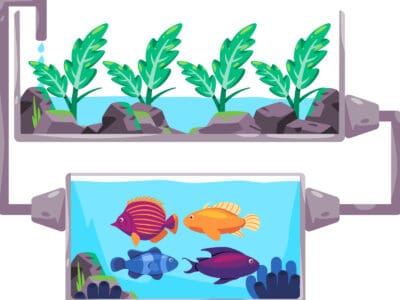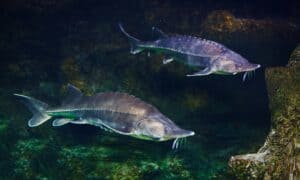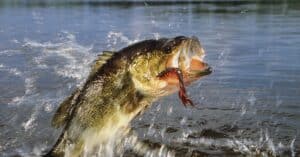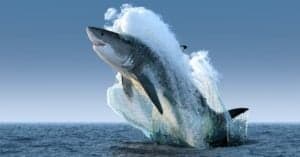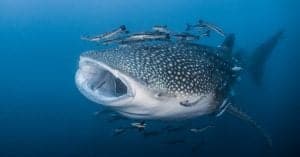Sea Dragon vs Seahorse
Seadragons and seahorses are some of the most fantastical creatures that live in the ocean. These unique animals seem almost too wild to be real, but incredibly, they both are. If you’ve seen them, in person or on television, you know that differentiating the two isn’t always easy. Still, despite their visual similarities, they are distinct species that are related but different. Today, we are going to take a look at those differences and learn a bit about them. Let’s explore: Sea Dragon vs Seahorse; what makes them unique?
Comparing a seadragon and a seahorse

A-Z-Animals.com
| Sea dragon | Seahorse | |
|---|---|---|
| Taxonomy | Family: Syngnathidae Genus: Phyllopteryx Species: 2 |
Family: Syngnathidae Genus: Hippocampus Species: 46 |
| Appearance | Algae-like. Long leaf-like appendages used for camouflage. Can change color. | Bony body. Head like a horse and a curled prehensile tail. May change appearance according to habitat. |
| Tails | Tail but non-prehensile. Can’t use it for grabbing. | Curly prehensile tails used to grab onto things. |
| Distribution | Coastal Australia | Worldwide |
| Reproduction | Male reproduction. Eggs live on males tail. | Male reproduction. Eggs live within a male’s pouch. |
The 5 main differences between a seadragon and a seahorse
The main differences between a sea dragon and a seahorse are that sea dragons have leaf-like appendages around their bodies, only live around Australia, and don’t internally grow embryos. Seahorses are bony in appearance, live all over the world, and grow embryos internally.
Sea dragons and seahorses have majestic names, despite their small statures. Still, these little sea creatures are some of the most interesting and curious things that live on earth. Sea dragons are flowy, algae-like creatures that rely on camouflage in order to avoid predators. Seahorses look similar, but are usually bonier and don’t have the “leaves” as a sea dragon does. Additionally, both creatures are closely related as the males carry the young, albeit in different ways.
One of the primary differences between the two is the use of their tails. Sea dragons have tails, but they don’t use them for much. The tails of a seahorse, on the other hand, are prehensile and can be uncurled. Seahorses are often seen with their tails wrapped around something as they drift in the water. Still, neither creatures are good at swimming.
Aside from their appearance and tails, sea dragons and seahorses have some other differences. Let’s explore those in some more detail below!
Sea Dragon vs Seahorse: Taxonomy
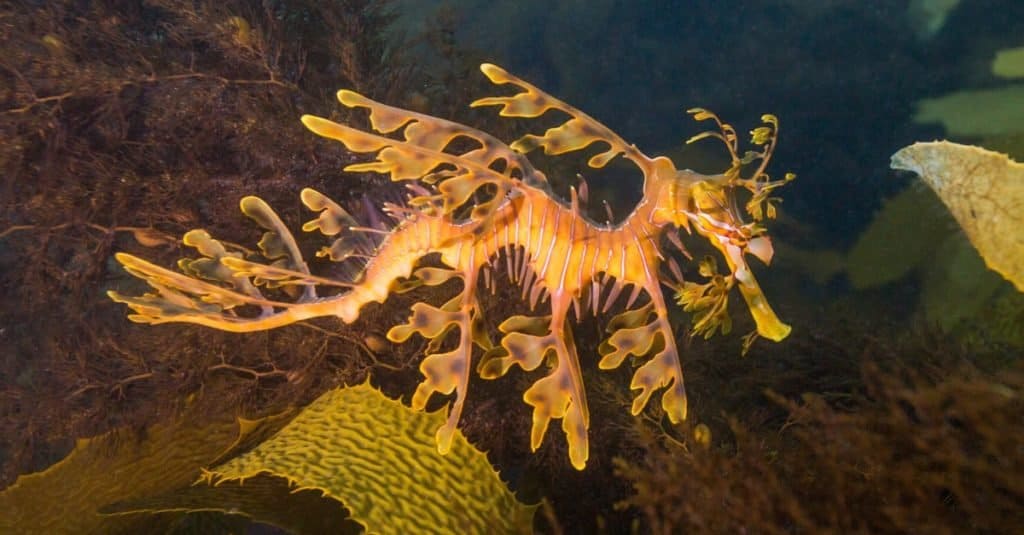
AshtonEa/Shutterstock.com
The sea dragon and seahorse are closely related but ultimately split into their own groups. Sea dragons belong to the Syngnathidae family, a group of fish that includes seahorses and pipefish. Within the Phyllopteryx genus, there are two species of sea dragon, the leafy (common) sea dragon and the ruby sea dragon.
Seahorses also belong to the Syngnathidae, alongside pipefish and seadragons. The genetic relation is visibly clear, alongside other traits that are markedly similar between the two. Seahorses split into the Hippocampus genus, however, and have 46 unique species within.
Sea Dragon vs Seahorse: Appearance
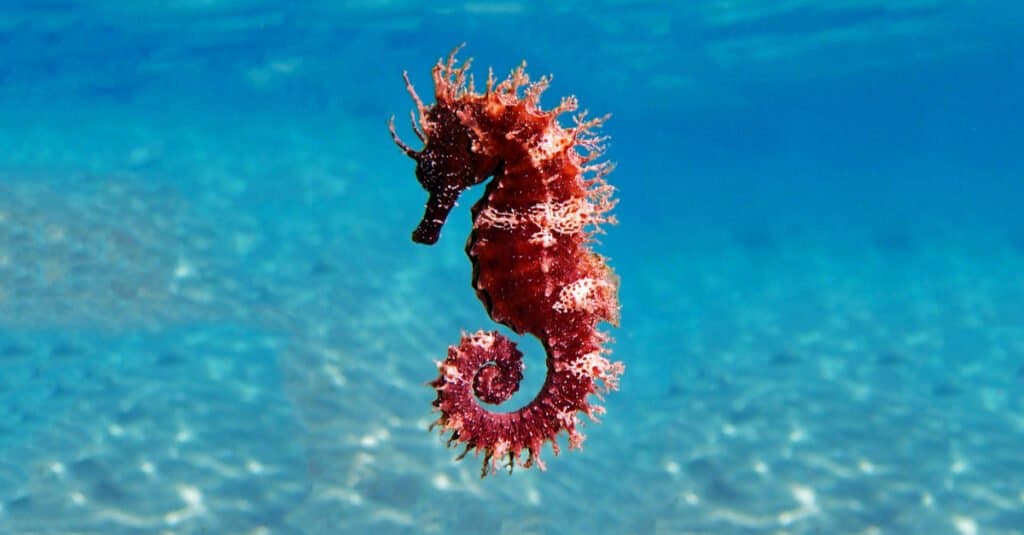
Vojce/Shutterstock.com
Both the sea dragon and seahorse have a horselike head, but that’s about all the visual similarity holds. Sea dragons are covered in leafy appendages that are designed to make them look like drifting seaweed. Additionally, sea dragons are usually more colorful than seahorses, although that isn’t always the case. Sea dragons have the ability to change their color in order to better stay hidden in their environment.
Seahorses get their name from their unique appearance. Their head and snout closely resemble a horse, only the bodies of a seahorse are oriented vertically. Additionally, a seahorse has a bonier appearance than a sea dragon and doesn’t have leafy appendages. The tail of a seahorse is usually curled up into a little coil. Seahorses also have the ability to change color in some instances and can also change their body growths in order to mimic their habitat.
Sea Dragon vs Seahorse: Tails
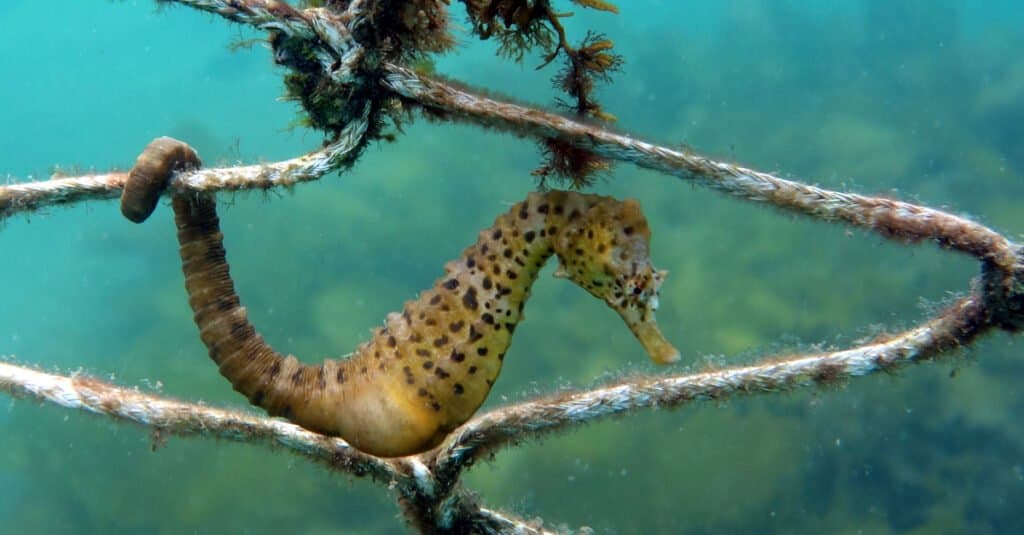
Dirk van der Heide/Shutterstock.com
While sea dragons have tails, they don’t serve much purpose. Sea dragons can barely swim and prefer to drift around through kelp forests. Instead of using their tail for swimming, they have tiny fins that slightly propel them, although they don’t move very fast.
Seahorses have prehensile tails that are regularly used as an anchor. Prehensile tails are simply tails that an animal has adapted in order to grasp or hold things. Seahorses have small dorsal fins on their spines that they use to propel them through the water, but most of the time, they can be found with their tails wrapped around something.
Sea Dragon vs Seahorse: Distribution
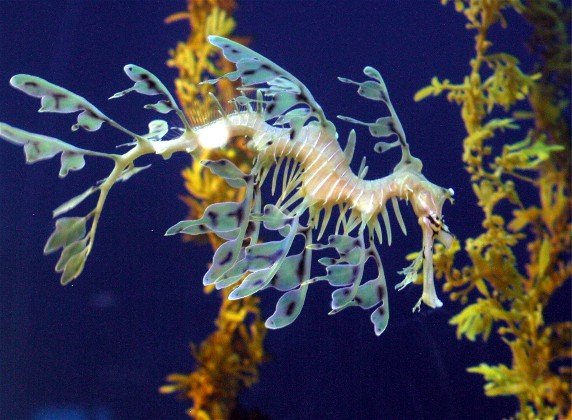
The only place in the world where sea dragons live is along the western and southern coast of Australia. Sea dragons live in coral reefs and kelp forests and are rather rare. Snorkelers often search for them and refer to them as “kelpies.”
Seahorses have a much wider distribution. Most of the nearly 50 species are found in tropical waters around the world. They are usually in sheltered areas, namely seagrass beds, reefs, and mangroves. Seahorses have been found in surprising places such as Noa Scotia, the Thames Estuary, and the Mediterranian Sea, as well as many others.
Sea Dragon vs Seahorse: Reproduction
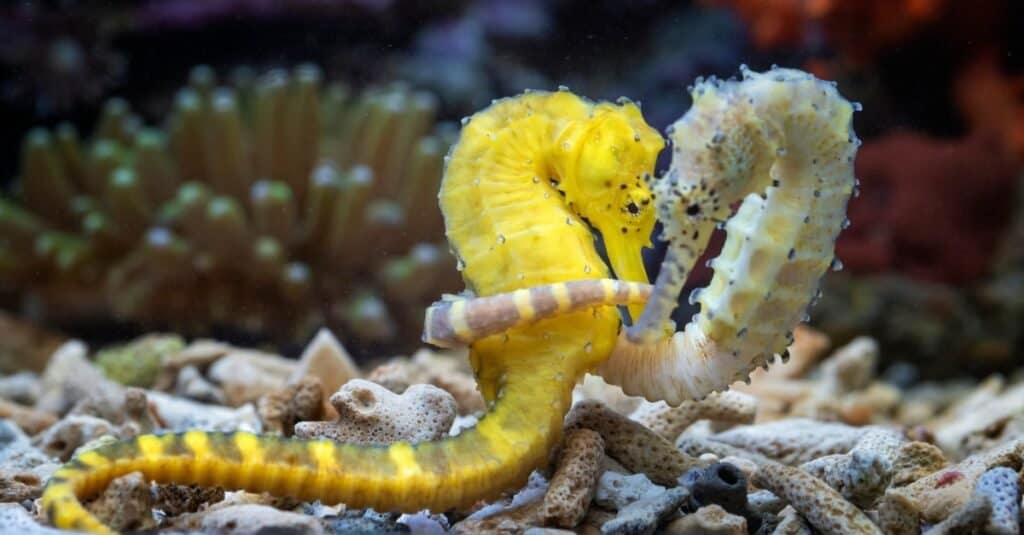
Bernard S Tjandra/Shutterstock.com
Sea dragons and seahorses are famously known for the male’s role in caring for the young. For a sea dragon, the eggs are deposited by the female on a patch near the tail. This “brood patch” will protect and oxygenate the eggs for around 9 weeks, at which point the eggs will hatch.
Seahorses have a similar process. After a four-phased mating ritual, the female will deposit her eggs into the “brood pouch” near the male’s belly. This internal pouch protects the eggs as they mature. After 2-4 weeks, the male pushes the babies out through its belly in a process that closely resembles birth.
More from A-Z Animals
Seadragons and seahorses are some of the most fantastical creatures that live in the ocean. These unique animals seem almost too wild to be real, but incredibly, they both are. If you’ve seen them, in person or on television, you know that differentiating the two isn’t always easy. Still, despite their visual similarities, they are distinct species that are related but different. Today, we are going to take a look at those differences and learn a bit about them. Let’s explore: Sea Dragon vs Seahorse; what makes them unique?
Comparing a seadragon and a seahorse

A-Z-Animals.com
| Sea dragon | Seahorse | |
|---|---|---|
| Taxonomy | Family: Syngnathidae Genus: Phyllopteryx Species: 2 |
Family: Syngnathidae Genus: Hippocampus Species: 46 |
| Appearance | Algae-like. Long leaf-like appendages used for camouflage. Can change color. | Bony body. Head like a horse and a curled prehensile tail. May change appearance according to habitat. |
| Tails | Tail but non-prehensile. Can’t use it for grabbing. | Curly prehensile tails used to grab onto things. |
| Distribution | Coastal Australia | Worldwide |
| Reproduction | Male reproduction. Eggs live on males tail. | Male reproduction. Eggs live within a male’s pouch. |
The 5 main differences between a seadragon and a seahorse
The main differences between a sea dragon and a seahorse are that sea dragons have leaf-like appendages around their bodies, only live around Australia, and don’t internally grow embryos. Seahorses are bony in appearance, live all over the world, and grow embryos internally.
Sea dragons and seahorses have majestic names, despite their small statures. Still, these little sea creatures are some of the most interesting and curious things that live on earth. Sea dragons are flowy, algae-like creatures that rely on camouflage in order to avoid predators. Seahorses look similar, but are usually bonier and don’t have the “leaves” as a sea dragon does. Additionally, both creatures are closely related as the males carry the young, albeit in different ways.
One of the primary differences between the two is the use of their tails. Sea dragons have tails, but they don’t use them for much. The tails of a seahorse, on the other hand, are prehensile and can be uncurled. Seahorses are often seen with their tails wrapped around something as they drift in the water. Still, neither creatures are good at swimming.
Aside from their appearance and tails, sea dragons and seahorses have some other differences. Let’s explore those in some more detail below!
Sea Dragon vs Seahorse: Taxonomy

AshtonEa/Shutterstock.com
The sea dragon and seahorse are closely related but ultimately split into their own groups. Sea dragons belong to the Syngnathidae family, a group of fish that includes seahorses and pipefish. Within the Phyllopteryx genus, there are two species of sea dragon, the leafy (common) sea dragon and the ruby sea dragon.
Seahorses also belong to the Syngnathidae, alongside pipefish and seadragons. The genetic relation is visibly clear, alongside other traits that are markedly similar between the two. Seahorses split into the Hippocampus genus, however, and have 46 unique species within.
Sea Dragon vs Seahorse: Appearance

Vojce/Shutterstock.com
Both the sea dragon and seahorse have a horselike head, but that’s about all the visual similarity holds. Sea dragons are covered in leafy appendages that are designed to make them look like drifting seaweed. Additionally, sea dragons are usually more colorful than seahorses, although that isn’t always the case. Sea dragons have the ability to change their color in order to better stay hidden in their environment.
Seahorses get their name from their unique appearance. Their head and snout closely resemble a horse, only the bodies of a seahorse are oriented vertically. Additionally, a seahorse has a bonier appearance than a sea dragon and doesn’t have leafy appendages. The tail of a seahorse is usually curled up into a little coil. Seahorses also have the ability to change color in some instances and can also change their body growths in order to mimic their habitat.
Sea Dragon vs Seahorse: Tails

Dirk van der Heide/Shutterstock.com
While sea dragons have tails, they don’t serve much purpose. Sea dragons can barely swim and prefer to drift around through kelp forests. Instead of using their tail for swimming, they have tiny fins that slightly propel them, although they don’t move very fast.
Seahorses have prehensile tails that are regularly used as an anchor. Prehensile tails are simply tails that an animal has adapted in order to grasp or hold things. Seahorses have small dorsal fins on their spines that they use to propel them through the water, but most of the time, they can be found with their tails wrapped around something.
Sea Dragon vs Seahorse: Distribution

The only place in the world where sea dragons live is along the western and southern coast of Australia. Sea dragons live in coral reefs and kelp forests and are rather rare. Snorkelers often search for them and refer to them as “kelpies.”
Seahorses have a much wider distribution. Most of the nearly 50 species are found in tropical waters around the world. They are usually in sheltered areas, namely seagrass beds, reefs, and mangroves. Seahorses have been found in surprising places such as Noa Scotia, the Thames Estuary, and the Mediterranian Sea, as well as many others.
Sea Dragon vs Seahorse: Reproduction

Bernard S Tjandra/Shutterstock.com
Sea dragons and seahorses are famously known for the male’s role in caring for the young. For a sea dragon, the eggs are deposited by the female on a patch near the tail. This “brood patch” will protect and oxygenate the eggs for around 9 weeks, at which point the eggs will hatch.
Seahorses have a similar process. After a four-phased mating ritual, the female will deposit her eggs into the “brood pouch” near the male’s belly. This internal pouch protects the eggs as they mature. After 2-4 weeks, the male pushes the babies out through its belly in a process that closely resembles birth.

